The waters of Lake Nahuel Huapi, its islands and the surrounding landscape make it one of the most attractive places in southern Argentina.
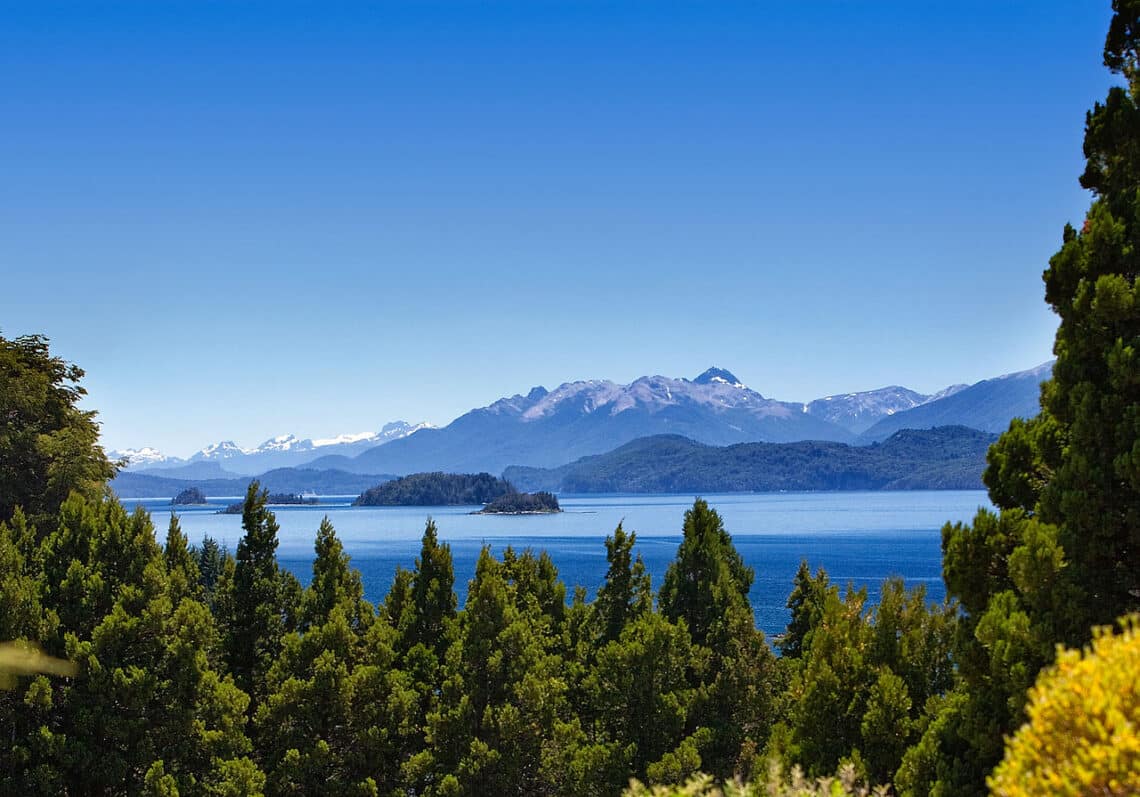
Lake Nahuel Huapi and all its beauty are a must for all tourists who visit the area since many more beautiful excursions have it as a common denominator.
Through it, you can visit Isla Victoria, Bosque de Arrayanes, Puerto Blest, Cascada de los Cántaros, among others.
In addition, the lake bathes the coasts of the Nahuel Huapi National Park and the Arrayanes National Park.
Regarding its origin, Lake Nahuel Huapi is of glacial origin, has an impressive surface area of 557 km² and is located at about 700 meters above sea level.
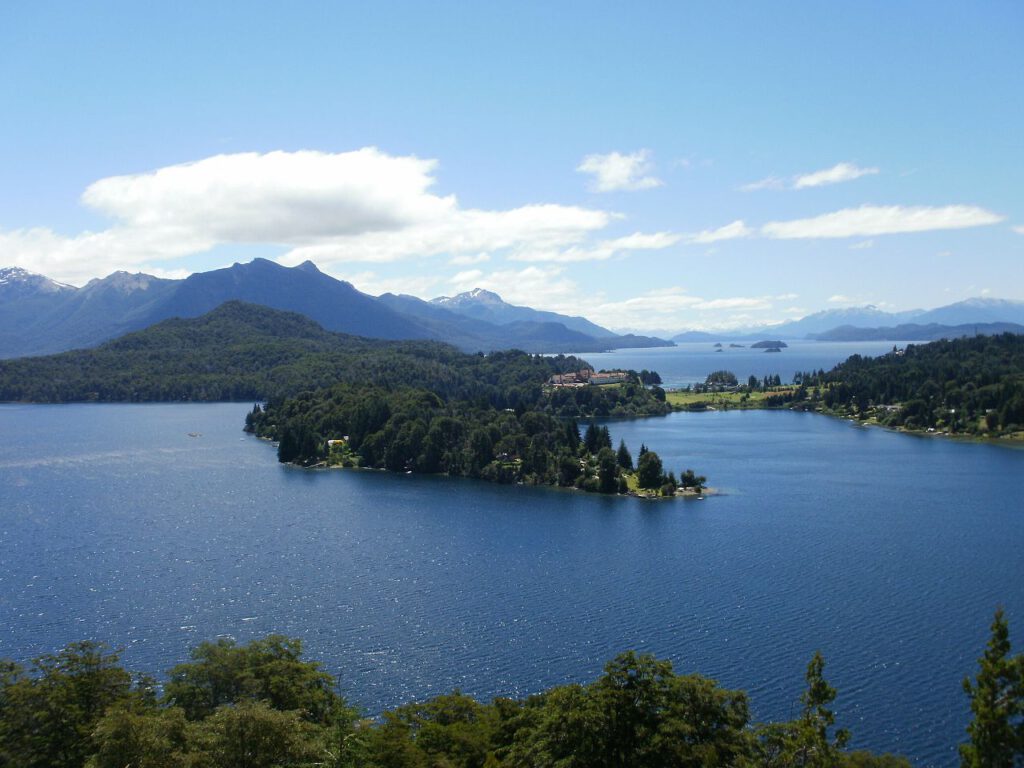
Along the shores of Lake Nahuel Huapi you can find viewpoints to admire the immense beauty of its landscapes.
It is shared by the provinces of Neuquén (80%) and Río Negro (20%), in Argentina, in the homonymous national park.
The lake has seven branches or arms:
Bell tower
Of sadness
Blest
Machete
Of the corner
Last hope
Huemul.
It is related to other less extensive lakes, such as Gutiérrez, Moreno, Espejo and Correntoso.
The waters of the lake are fed by the thaws and also constitute the source of the Limay river.
It also stands out for its depth as it reaches a maximum depth of 464 m.
The origin of the name
The origin of the name Nahuel Huapi, which means “jaguar island” in Mapudungun and refers to Victoria Island, the largest in the lake.
Islands of Lake Nahuel Huapi
There are several islands that we can find in the Lake.
Among them: the Victoria and Huemul islands are the largest, but the islets of Las Gallinas and de las Gaviotas, especially the Centinela islet, cannot be omitted.
Victoria Island
It has several islands, the largest and most important for its tourist activity being Victoria Island, measuring 31 km².
Victoria Island has unique landscapes with incredible visits to Lake Nahuel Huapi.
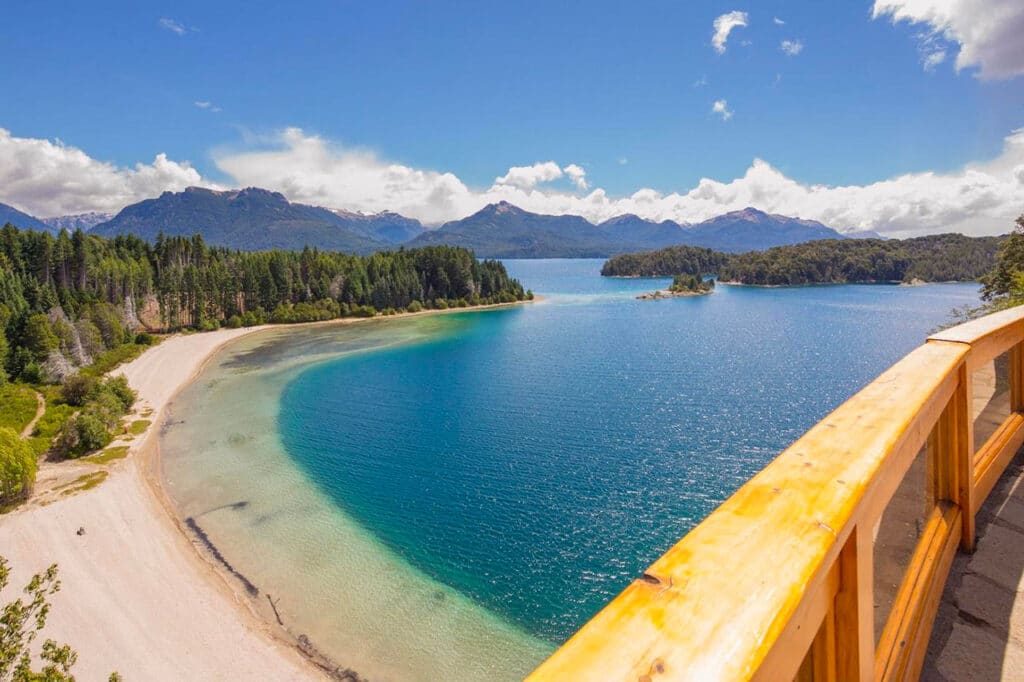
Victoria Island
Within it, the Isla Victoria Forest Center works, recognized worldwide and raised to the level of a Botanical Garden in 2020.
It is an unavoidable visit for every visitor to the area.
Sentinel Island
Centinela Island is a small islet located in Lake Nahuel Huapi.
In it rest the remains of Dr. Francisco Pascasio Moreno, who with his donation of land laid the foundation of what is today the Nahuel Huapi National Park.
Centinela Island has a small dock, and only a simple white cross can be seen when sailing near it.
The tourist boats that daily pass him on their way to Puerto Blest sound their siren as they pass in front of the island as a sign of tribute to Dr. Moreno
The waters of Lake Nahuel Huapi
Its waters, of an intense blue color, its islands and the surrounding landscape make it one of the most attractive places in southern Argentina.
At present, the growing population of the cities bordering this lake have created a pollution problem.
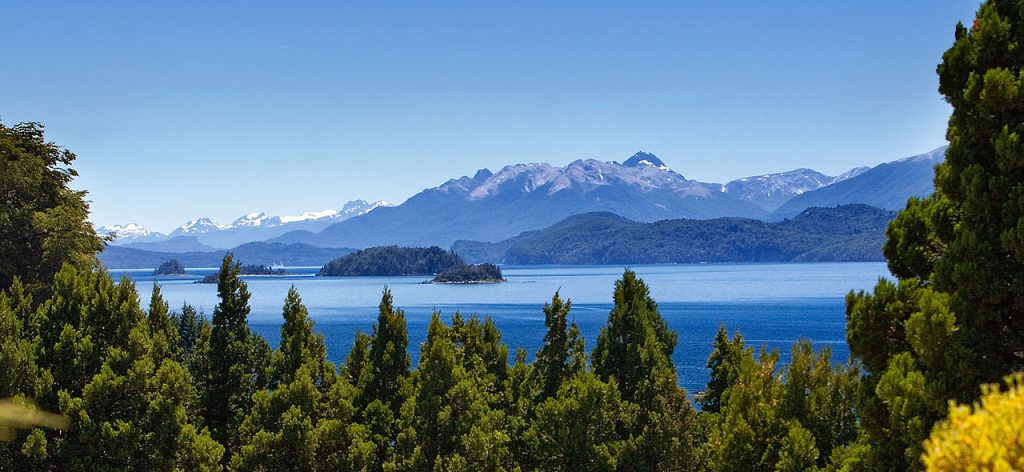
Nahuel Huapi Lake, Bariloche
Sailing and other water activities are allowed in many lakes in the Park.
In Lake Nahuel Huapi, several companies provide services for boat trips on the lake, through multiple routes of incomparable beauty.
One of the most visited sites is the myrtle forest, protected since the creation of the Los Arrayanes National Park along with the visit to Victoria Island.
The beaches of Lake Nahuel Huapi
Close to the city of Bariloche
Centennial Beach
One of the most extensive and busiest, located at the entrance to Bariloche, a few meters from the mouth of the Ñireco River and near the bus station.
There they practice windsurfing and kitesurfing, among other sports.
Center Beach
It is located in front of the Civic Center, in the central area of the city.
It has a watchtower for lifeguards, fully equipped for emergencies.
This tower is surrounded by a terrace with lounge chairs, benches and a healthy plaza.
Melipal
It is located at kilometer 4 of Av. Bustillo.
The landmark of the descent to the lake is a gas station and a local supermarket.
It is a very picturesque beach, with rocks ideal for children to have fun climbing.
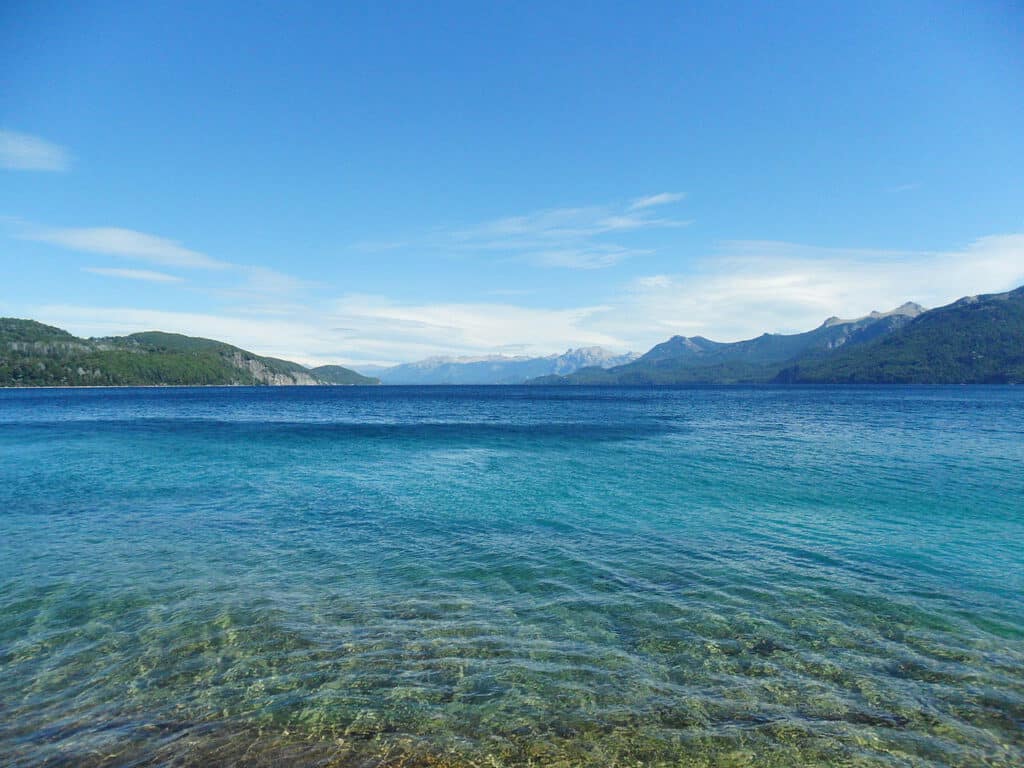
Playa Bonita
It is located at kilometer 8 of Av. Bustillo and it is a relatively long beach with small stones.
It has in its vicinity with bars, restaurants and kiosks.
There are service providers to rent equipment and practice diving and kayaking.
It has lifeguards. From the coast you can see the islands of Huemul, Gallina and Victoria.
Villa Tacul
It is located at kilometer 29 of the Circuito Chico road, passing the Llao LLao.
It is a beach surrounded by forest, with calm waters although a little colder than the previous ones.
These places are a good opportunity to educate and set an example to the little ones: not leaving garbage, taking care of the place and respecting the nature that surrounds us
The Legend of Nahuelito
According to popular belief, a strange creature lives in Lake Nahuel Huapi.
The legend is prior to the arrival of Europeans to the area.
The original peoples of the area already had stories about this mysterious creature.
Starting in 1897, Dr. Clemente Onelli, director of the Buenos Aires Zoo, began to receive sporadic reports about a strange creature that inhabits the Patagonian lakes and organizes a search expedition that did not yield positive results.
The waters of Lake Nahuel Huapi are very transparent and crystal clear.
The first recorded sighting dates from 1910, when George Garret was able to spot “about 400 meters away a creature whose visible part was between 5 and 7 meters long and protruded about two meters above the water.”
More recently, in 1960, the Argentine Navy chased an unidentified underwater object into the lake for 18 days, without being able to identify it.
The most popular hypothesis is that the prehistoric monster “Nahuelito” would be a survivor of the time of the dinosaurs, probably a “plesiosaur”.
Sometimes reality exceeds imagination, is the existence of this animal in the lake true?
